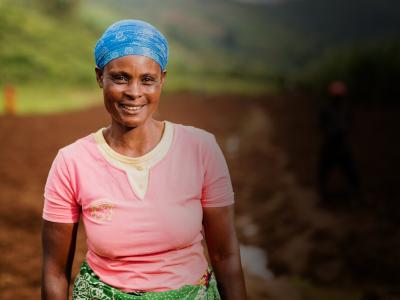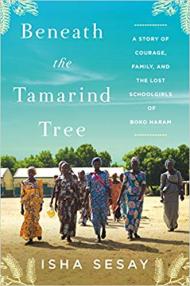For our first book club choice, Women for Women International has chosen to highlight Beneath the Tamarind Tree: A Story of Courage, Family, and the Lost Schoolgirls of Boko Haram. We were delighted that author and award-winning journalist Isha Sesay joined us last fall to discuss her experiences following the story of the girls kidnapped by Boko Haram and why we must invest in women and girls.
In this series, we’ll share with you a book to learn more about the issues facing women around the world and some questions to help you start discussions.
This month’s book brings us to one of the country’s where we work: Nigeria.
What is Beneath the Tamarind Tree about?
Beneath the Tamarind Tree weaves together the stories of the 276 Nigerian schoolgirls kidnapped by Boko Haram with Isha’s dedication to learn what happened to them – and ensure that the world learned, too. Her writing reveals the injustices these girls suffered not just by Boko Haram but by media and a system that decided girls weren’t important enough.
Isha’s commitment to understanding these girls led to her spending months with them and their families. She centers their story, their voices, and their strength.
Throughout the book, Isha highlights the importance of investing in girls’ education and power, pointing to her own mother as an example of what women can accomplish.
Suggested Discussion Questions
- What did you learn about the status of women and girls in Nigeria? In northern Nigeria? Southern Nigeria? In Chibok, the town where the girls were taken?
- What were you surprised to learn in this account of the Chibok girls?
- How does Isha’s upbringing – from the lessons she learned from her mother to spending part of her childhood in Sierra Leone – contextualize the issues in this book?
- How does the framing of the schoolgirls through the stories of Priscilla, Mary, Saa, and Dorcas affect your understanding of the kidnapping?
- How does poverty affect the challenges facing women and girls in Nigeria?
As you read Beneath the Tamarind Tree, feel free to let us know what you think on social media by tagging us on Facebook, Twitter, or Instagram!
To hear what Isha has to say about the story of the Chibok girls, watch our conversation with her.

